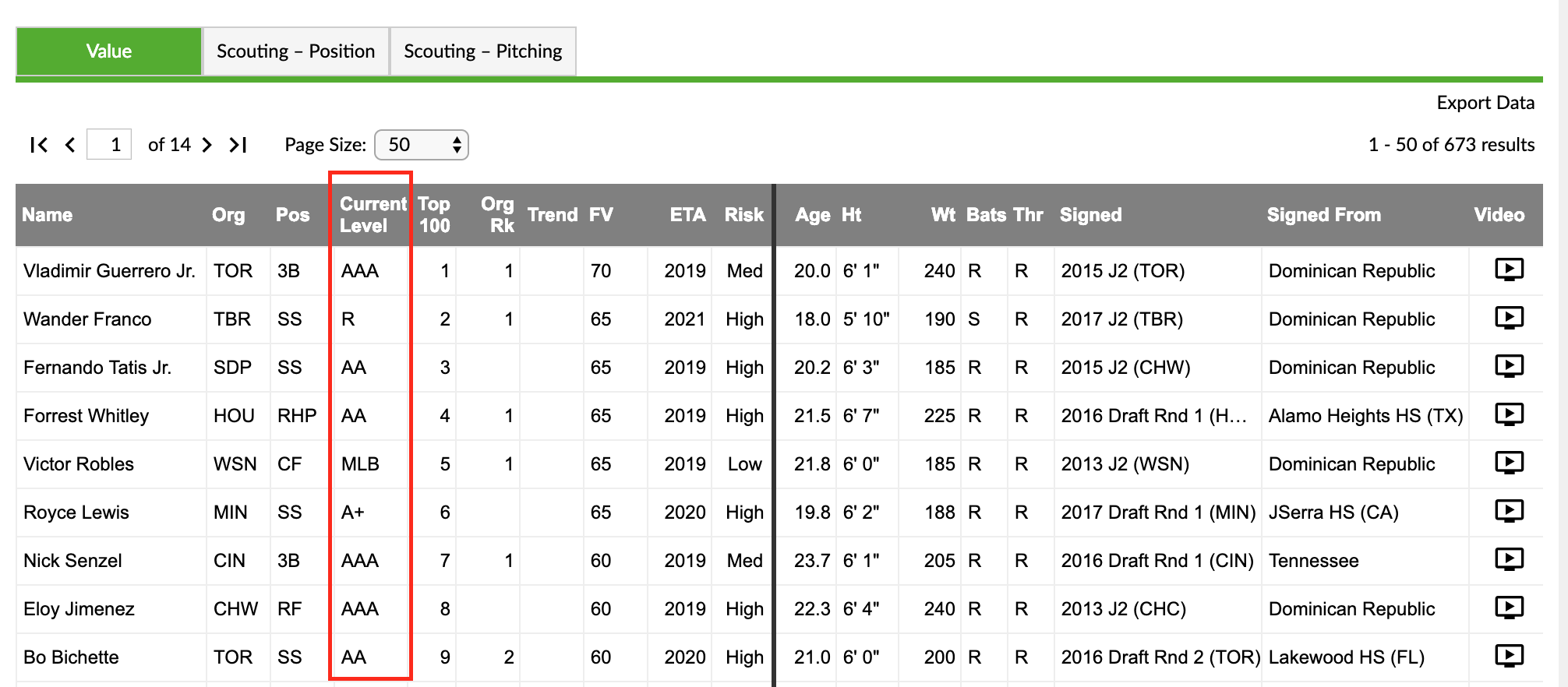Please note, this posting contains three positions.
Baseball Systems Developer, Research & Development
Department: Baseball Operations
Supervisor: Senior Architect, Research and Development
Classification: Full-time (Exempt)
The Houston Astros are seeking a Baseball Systems Developer for the team’s Baseball Research and Development group. The Baseball Systems Developer will work closely with the Senior Architect of R&D as part of a cross-functional agile team to build infrastructure and design systems that encourage the effective understanding and application of information throughout Baseball Operations.
Essential Duties & Responsibilities:
- Collaborate with a cross-functional agile team on designing, testing, implementing, and maintaining scalable software for Baseball Operations
- Collaborate with a cross-functional agile team on improving efficiency and scalability of current Baseball Operations software
Education and/or Experience:
- Bachelor’s degree in computer science or related field is preferred
- Proficient in at least two of the following:
- C# and ASP.NET or ASP.NET Core
- HTML/JavaScript (TypeScript preferred)/CSS
- A front-end framework like React, Angular, or Vue
- Experience with Microsoft Azure/Amazon Web Services/Google Cloud platform is preferred
- Experience with continuous integration/continuous deployment is preferred
- Experience with data visualization tools such as Plotly and D3 is preferred
- Experience with formal software (unit/integration/ testing and data-driven development preferred
- Experience with agile software development processes preferred
- Familiarity with Python and R Shiny Apps preferred
- Strong analytical and problem-solving skills
- Strong interpersonal and communication skills (written and verbal)
To Apply:
To apply, please visit TeamWorkOnline and complete the application.
Baseball Systems Data Modeler, Research & Development
Department: Baseball Operations
Supervisor: Senior Architect, Research and Development
Classification: Full-time (Exempt)
The Houston Astros are seeking a Baseball Systems Data Modeler for the team’s Baseball Research and Development group. The Baseball Systems Data Modeler will work closely with the Senior Architect of R&D as part of a cross-functional agile team to build infrastructure and design systems that encourage the effective understanding and application of information throughout Baseball Operations.
Essential Duties & Responsibilities:
- Create and maintain ETL jobs for incoming data feeds
- Ensure data integrity within the database and data processes
- Design, implement, and maintain data mapping procedures
- Apply statistical methods for handling and testing missing data problems
Education and/or Experience:
- Bachelor’s degree in computer science or related field is preferred
- Experience with SQL Server and T-SQL, including SQL Server Reporting Service and SQL Server Integration Services
- Experience with designing and developing data marts
- Experience with data governance
- Understanding of baseball data (e.g., TrackMan, Statcast) is preferred
- Experience with Microsoft Azure/Amazon Web Services/Google Cloud platform is preferred
- Experience with continuous integration/continuous deployment is preferred
- Experience with agile software development processes preferred
- Experience with software testing and data-driven development preferred
- Familiarity with Python and R is preferred
- Strong analytical and problem-solving skills
- Strong interpersonal and communication skills (written and verbal)
To Apply:
To apply, please visit TeamWorkOnline and complete the application.
Machine Learning Engineer, Research & Development
Department: Baseball Operations
Supervisor: Director, Research and Development
Classification: Full-time (Exempt)
The Houston Astros are seeking a Machine Learning Engineer for the team’s Baseball Research and Development group. The Machine Learning Engineer will work closely with the Senior Architect and Director of R&D as part of a cross-functional agile team to deploy statistical, machine learning, and deep learning models at scale and to ensure that they are reliable and repeatable.
Essential Duties & Responsibilities:
- Collaborate with a cross-functional agile team on developing machine learning systems from prototyping to production
- Support investigation of new software packages/vendors, APIs, and algorithms to deliver quality analytics and machine learning at scale
- Develop infrastructure and tools to productionize new algorithms in a repeatable manner
Education and/or Experience:
- Advanced degree in statistics, engineering, applied math, physics, quantitative social sciences, computer science, operations research or similar field or professional experience preferred
- Fluency in R, including experience with the tidyverse and modern R development practices
- Fluency in Python with preference for Python 3 experience
- Experience with software testing and data-driven development strongly preferred
- Experience with large data sets and distributed computing strongly preferred
- Experience with deep learning frameworks (Tensorflow, CNTK, Caffe, etc.) preferred
- Ability to write SQL queries is preferred
- Experience with agile software processes preferred
- Strong analytical and problem-solving skills
- Strong interpersonal and communication skills (written and verbal)
To Apply:
To apply, please visit TeamWorkOnline and complete the application.
For all positions:
Work Environment
This job operates in an office setting. This role routinely uses standard office equipment such as computers, phones, photocopiers, and filing cabinets. The noise level is usually moderate but can be loud within the stadium environment.
Physical Demands
The physical demands described here are representative of those that must be met by an employee to successfully perform the essential functions of this job. This is a largely sedentary role; however, some filing is required. This would require the ability to lift files, open filing cabinets and bend or stand on a stool as necessary.
Position Type and Expected Hours of Work
Ability to work a flexible schedule, including evenings, weekends, and holidays.
Travel
Rare travel maybe expected in this role.
Other Duties
Please note this job description is not designed to cover or contain a comprehensive listing of activities, duties or responsibilities that are required of the employee for this job. Duties, responsibilities and activities may change at any time with or without notice.
The Astros are an equal opportunity employer and all qualified applicants will receive consideration for employment without regard to race, color, religion, sex, national origin, disability status, protected veteran status, or any other characteristic protected by law.
EOE/M/F/Vet/Disability.
The content in this posting was created and provided solely by the Houston Astros.

